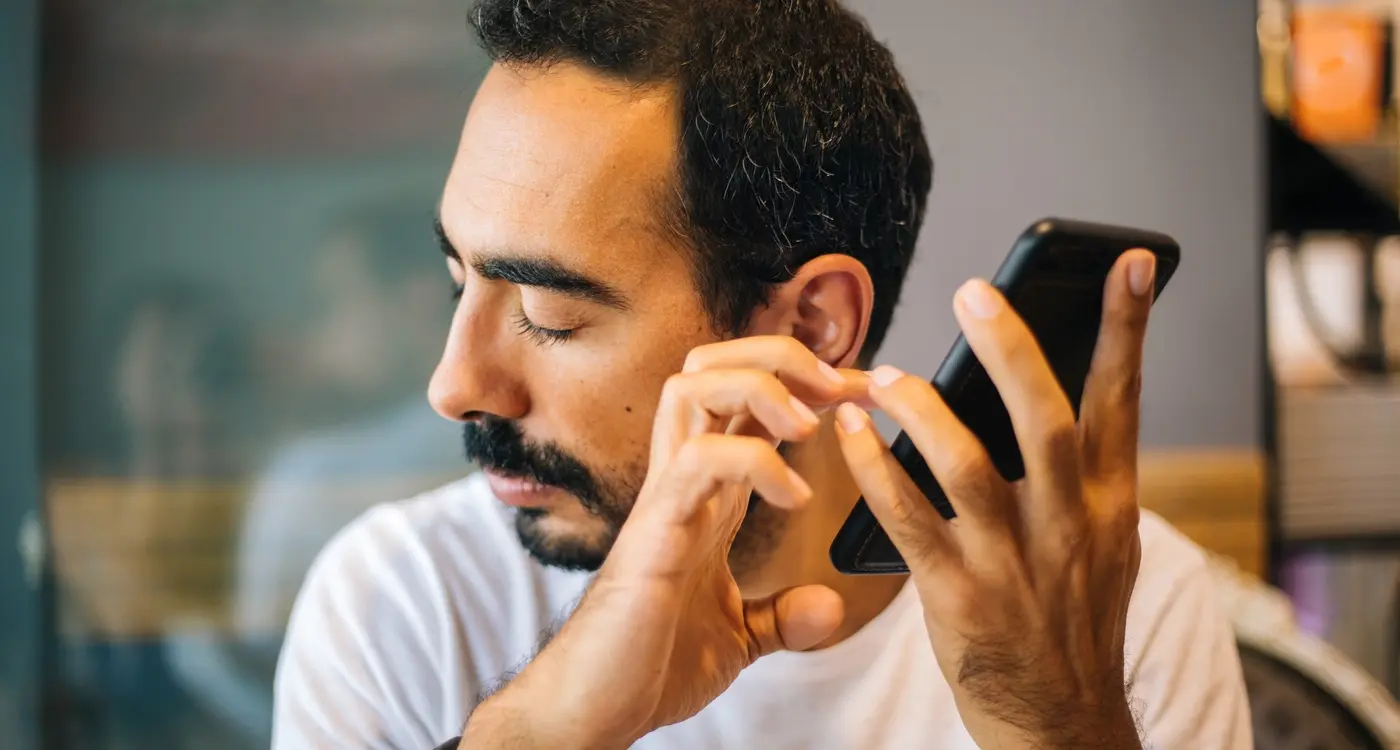5 Simple Ways To Make Your App More Accessible (Without Breaking The Bank)
One in five people worldwide lives with a disability—that's over 1.3 billion potential users who might struggle to use your mobile app if it's not designed with accessibility in mind. Yet most app developers still treat accessibility as an afterthought, assuming it's too expensive or complicated to implement. This couldn't be further from the truth.
The reality is that making your app accessible doesn't require a complete redesign or a massive budget. Many of the most effective accessibility improvements are simple tweaks that cost nothing but time and thoughtful planning. When you build with inclusive design principles from the start, you're not just helping users with disabilities—you're creating a better experience for everyone.
Accessibility is not a feature you add on at the end. It's a design principle that makes your app usable by the widest possible audience
The beauty of budget-friendly accessibility is that it often overlaps with good design practices you should be following anyway. Clear navigation, readable text, and logical layouts benefit every user, regardless of their abilities. In this guide, we'll walk through five straightforward ways to make your app more inclusive without breaking your development budget or timeline.
Why Accessibility Matters for Your Mobile App
I'll be honest with you—accessibility isn't just about doing the right thing (though that's part of it). It's about reaching more customers and making your app work better for everyone. When I first started building apps, I thought accessibility was this complicated, expensive add-on that only big companies needed to worry about. Boy, was I wrong!
Here's the thing: one in five people has some form of disability. That's a massive chunk of your potential users you're ignoring if your app isn't accessible. We're talking about people who might struggle with small text, can't distinguish between certain colours, or need to navigate using voice commands instead of touch.
The Business Case You Can't Ignore
Beyond the moral argument, there's a solid business reason to care about accessibility. Apps that work well for people with disabilities tend to work better for everyone else too. Those large, easy-to-tap buttons you add for users with motor difficulties? They make your app easier to use on a bumpy bus ride. Clear, simple navigation helps people with cognitive disabilities—and it also helps your stressed-out users who are trying to complete a task quickly.
Plus, accessible apps often rank better in app stores and face fewer legal challenges. Win-win, really.
Making Text Easy to Read
Text readability is probably the most straightforward win when it comes to making your mobile app more accessible—and it won't cost you a penny extra. I've worked on countless apps where the text was so small or faded that even I struggled to read it on my phone, let alone someone with vision difficulties.
The magic numbers you need to remember are simple: 16 pixels minimum for body text and 24 pixels for headings. Any smaller and you're asking people to squint at their screens. Font weight matters too; light or thin fonts might look sleek in your design mockups but they become invisible in bright sunlight or for users with visual impairments.
Spacing Makes All the Difference
Don't cram your text together like sardines in a tin. Line spacing should be at least 1.5 times your font size—so if you're using 16px text, your line spacing needs to be 24px minimum. This gives letters room to breathe and makes scanning through content much easier.
Stick to system fonts like San Francisco (iOS) or Roboto (Android) for body text. They're designed specifically for mobile screens and are free to use.
Keep your paragraphs short too. Nobody wants to read a wall of text on a 6-inch screen. Break things up every 2-3 sentences and your users will thank you for it.
Simple Colour Choices That Work for Everyone
Colour might seem like a design choice, but it's actually one of the biggest barriers people face when using apps. I've worked with clients who've spent thousands on beautiful colour schemes that look amazing but are completely unusable for people with visual impairments. The good news? Fixing this doesn't require a complete redesign or expensive consultants.
The magic number you need to remember is 4.5:1—that's the contrast ratio between your text and background colours. There are free tools like WebAIM's contrast checker that'll tell you instantly if your colours pass this test. Dark text on light backgrounds almost always works, but those trendy grey-on-grey designs? They're often a nightmare for accessibility.
Quick Wins for Better Colour Accessibility
- Use high contrast combinations like black text on white backgrounds
- Avoid using colour alone to convey information—add icons or text labels
- Test your app in grayscale mode to see if it still makes sense
- Choose colours that work for colourblind users (about 8% of men and 0.5% of women)
- Make sure error messages don't rely only on red colouring
The best part about fixing colour accessibility is that it makes your app easier to use for everyone, not just people with visual impairments. Better contrast means your app works brilliantly in bright sunlight too.
Adding Voice Support Without Complex Coding
Voice support sounds like rocket science, doesn't it? When I first started working with mobile app development, I thought adding voice features would require months of coding and a team of specialists. Turns out I was completely wrong—modern mobile platforms have made this surprisingly straightforward.
Both iOS and Android come with built-in voice recognition that your mobile app can tap into without writing complex speech processing code. Apple's Speech Framework and Android's SpeechRecognizer API do the heavy lifting for you. Your development team just needs to connect these existing tools to your app's functions.
Simple Voice Features That Make a Real Difference
Start small with voice-to-text input fields. Users can speak their search queries, comments, or form entries instead of typing them out. This budget-friendly approach helps people with motor difficulties, vision problems, or anyone who finds typing challenging on small screens.
Voice input isn't just about accessibility—it's about making your app faster and more convenient for everyone to use
Voice navigation comes next; users can say "go back" or "open settings" to move around your app. The development work is minimal since you're using pre-built voice recognition libraries, but the impact on inclusive design is massive. People using screen readers or those with limited mobility suddenly have another way to interact with your mobile app—and that's what good accessibility looks like.
Creating Clear Navigation That Anyone Can Follow
I've watched people struggle with confusing app navigation more times than I can count—and it's always painful to see. Good navigation shouldn't make users think; it should just work. The secret isn't fancy animations or clever hiding spots for menus. It's about making things obvious.
Start with your main menu. Users need to know where they are and how to get back to where they came from. This means having a clear home button that actually looks like one, not some abstract icon that requires a design degree to understand. Your back button should be in the same place on every screen, and it should look the same too.
Simple Navigation Rules That Work
- Keep your main menu items to five or fewer options
- Use words alongside icons—don't make people guess what a symbol means
- Make buttons big enough to tap easily (at least 44 pixels)
- Put the most important actions where thumbs naturally reach
- Show users where they are with highlighted menu items
The bottom navigation bar is your best friend for mobile apps. People can reach it easily with their thumbs, and it stays visible while they browse. Don't bury important features three levels deep in menus—if something matters to your users, make it easy to find.
Testing Your App with Real Users
Getting feedback from real people who actually use your mobile app is one of the most budget-friendly ways to spot accessibility problems before they become big issues. I've seen too many apps launch with what developers thought were brilliant features, only to discover that users with disabilities couldn't access them at all.
The good news? You don't need to hire an expensive research company to get started. Begin by reaching out to friends, family, or colleagues who might have different accessibility needs. Someone who wears glasses, has arthritis, or uses their phone with one hand can give you invaluable insights about your app's inclusive design.
Simple Testing Methods
You can organise basic testing sessions without spending a fortune. Ask your testers to complete common tasks in your app whilst you observe quietly—don't help them or give hints. Watch where they struggle, what they skip, and what confuses them.
- Test with screen readers turned on
- Try using the app with larger text settings
- Navigate using only voice commands
- Use the app in bright sunlight to test contrast
- Test with one hand whilst holding something
Record these testing sessions (with permission) so you can review them later and spot patterns you might have missed during the live session.
The beauty of user testing is that people will show you problems you never knew existed. They'll use your app in ways you never imagined, and that's exactly what you need to build something truly accessible.
Conclusion
Making your app more accessible doesn't have to cost a fortune or require a complete rebuild. The five approaches we've covered—readable text, smart colour choices, voice support, clear navigation, and user testing—can all be implemented without breaking your budget. Most of these changes are about making better design decisions rather than adding expensive features.
I've worked with countless clients who thought accessibility meant massive development costs and months of extra work. That's simply not true. Many accessibility improvements are quick wins that make your app better for everyone, not just users with disabilities. Better contrast helps people using their phones in bright sunlight; clear navigation benefits rushed commuters; voice support is useful when people's hands are full.
The best part? These changes often improve your app's overall usability and can even boost your app store rankings. Apple and Google both favour apps that work well for all users. Start with one or two of these methods and gradually implement the others. Your users will notice the difference, and you'll sleep better knowing your app works for everyone who wants to use it.
Share this
Subscribe To Our Blog
You May Also Like
These Related Stories

From Buttons To Braille: How We Design Apps For Every User

Why Ignoring App Accessibility Could Cost You Millions Of Users





